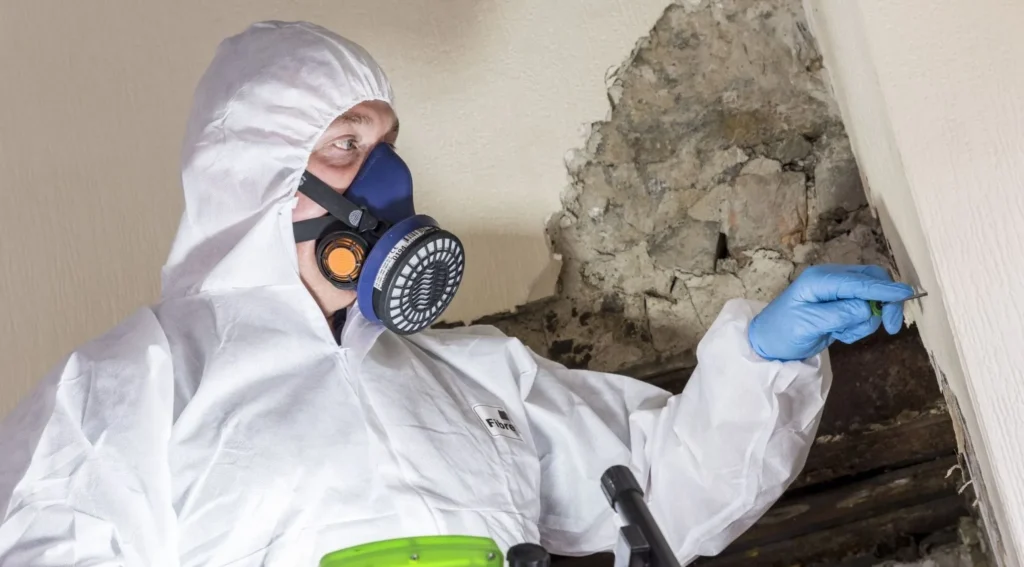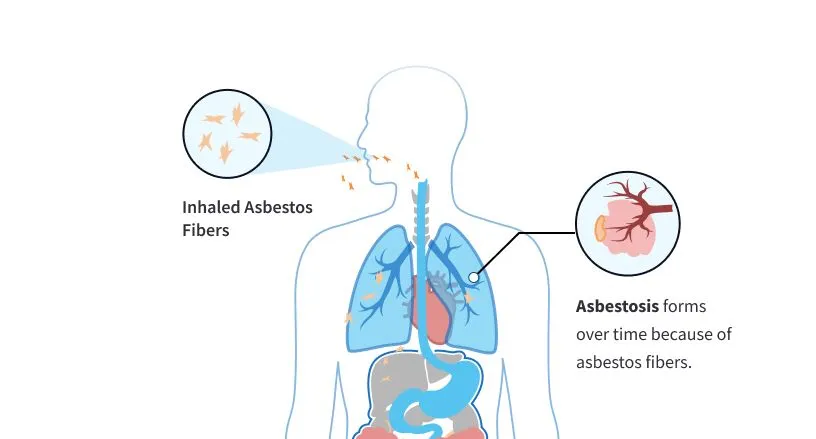Phone:
720-399-3335
Office address:
1685 S. Colorado Blvd. Suite 151, Denver, CO 80222

Battling the bane of asbestos, you’re probably wondering why its proper disposal is so vital. It’s no secret that asbestos is linked with serious health risks, like lung cancer and mesothelioma. But did you know that these risks linger if asbestos isn’t disposed of properly?
Now, imagine the potential hazards to your health and the environment if this hazardous material isn’t handled right. You’ll be surprised by the full extent of the implications, and you might even rethink how you’ve been dealing with asbestos in your own space.
Key Takeaways

To fully grasp the importance of proper asbestos disposal, you must first understand what asbestos is and how it has been used throughout history. Asbestos is a mineral fiber that’s been appreciated for its heat resistance, strength, and insulation properties. It’s also resistant to chemical and biological degradation, which are material characteristics that have made it attractive to multiple industries.
In diving into the asbestos history, you’ll find that its use dates back over 4,000 years. However, it wasn’t until the 19th and 20th centuries that its usage became more widespread, especially in the construction industry. It was commonly used in roofing, flooring, and insulation materials for houses. At the same time, you could find it in car brakes and clutches, heat-resistant fabrics, and many other products.
However, the properties that make asbestos useful are also what make it difficult and dangerous to dispose of. Asbestos fibers don’t break down in the environment, and improper disposal can lead to contamination of soil and water. Hence, understanding the material characteristics and history can help underline the need for proper asbestos disposal.

While asbestos has been widely used due to its unique properties, its exposure can pose serious health risks. Long-term exposure to asbestos fibers could lead to a variety of asbestos-related diseases, underlining the need for asbestos exposure prevention.
You should be aware of diseases such as asbestosis, a chronic lung ailment that causes shortness of breath, coughing, and potentially fatal lung failure. Another disease is mesothelioma, a rare form of cancer targeting the lining of the lungs, heart, or abdomen, which is almost exclusively caused by asbestos exposure.
Even non-malignant conditions like pleural plaques can considerably impair lung function. The latency period for these diseases can extend to decades, meaning symptoms may not emerge until long after exposure.
Every year, thousands of deaths are attributed to asbestos-related diseases, emphasizing the gravity of the situation. It’s important to understand that there’s no safe level of asbestos exposure. Even brief or minimal exposure can lead to serious health issues, hence why prevention is paramount.
Call Now
You Can Call Us At This Number: 720-399-3335
Given the serious health risks you’ve learned about, it’s clear that the proper disposal of asbestos isn’t just a regulatory requirement, but a matter of public health urgency. The handling and disposal of this hazardous material should be taken very seriously. This is why the importance of asbestos training can’t be overstated. Through this training, individuals learn the necessary precautions and procedures to safely eliminate the threat posed by asbestos.
Disposal methods comparison is an integral part of the training, enabling individuals to weigh the pros and cons of each method and choose the most effective one. The two primary disposal methods are landfilling and encapsulation. Landfilling involves carefully sealing asbestos waste in special containers before burying it in designated landfills. Encapsulation, on the other hand, involves treating the asbestos with a bonding agent that prevents the fibres from becoming airborne.
Both methods have their merits and drawbacks, but the choice often depends on the specific circumstances. Regardless, it’s crucial to remember that improper disposal can lead to severe health consequences, underlining the importance of proper asbestos disposal and the necessary training to achieve it.
Before diving into the specifics of safe asbestos removal procedures, it’s crucial to understand that they’re not a DIY task; you need trained professionals to guarantee a safe and thorough job. Protective Gear Usage is a critical aspect of these procedures. It’s not just about donning a mask; it involves wearing a full-body suit, gloves, and respirators to prevent inhalation or ingestion of asbestos fibers.
Additionally, all equipment must meet specific safety standards to guarantee adequate protection. The gear should be decontaminated or disposed of safely after each use to prevent further asbestos spread.
Disposal Site Selection also plays a crucial role in the safe removal process. Asbestos waste shouldn’t be dumped in regular trash bins or landfills. It requires specific, designated disposal sites that are equipped to handle such hazardous materials. This ensures the asbestos doesn’t contaminate other areas or pose a risk to the public.
Did you know that improper disposal of asbestos can lead to severe legal consequences? This isn’t just about protecting public health, but also ensuring compliance with legal guidelines. Disposal regulations are in place to control the amount and manner of asbestos waste management. Failing to comply with these rules could result in hefty legal penalties.
If you’re found guilty of improper disposal, you could face fines, imprisonment, or both. In some jurisdictions, penalties can range into the tens of thousands of dollars per violation. For businesses, these fines can escalate into millions. In addition, the accused party may also be held responsible for the cost of cleanup and removal of the improperly disposed asbestos.
Non-compliance with disposal regulations doesn’t just harm you legally and financially. It can also damage your reputation, especially if you run a business. Trust can be hard to rebuild once your customers or clients realize that you’ve put their health at risk due to negligence.
So, you see, managing asbestos properly isn’t just a legal obligation, it’s a health imperative.
Inappropriate handling can result in serious health issues or even legal consequences. It’s vital to follow safe removal procedures and dispose of asbestos responsibly.It’s not worth risking your health, or breaking the law, for improper disposal. Be smart, be safe, and make sure you’re doing your part in managing this hazardous material.